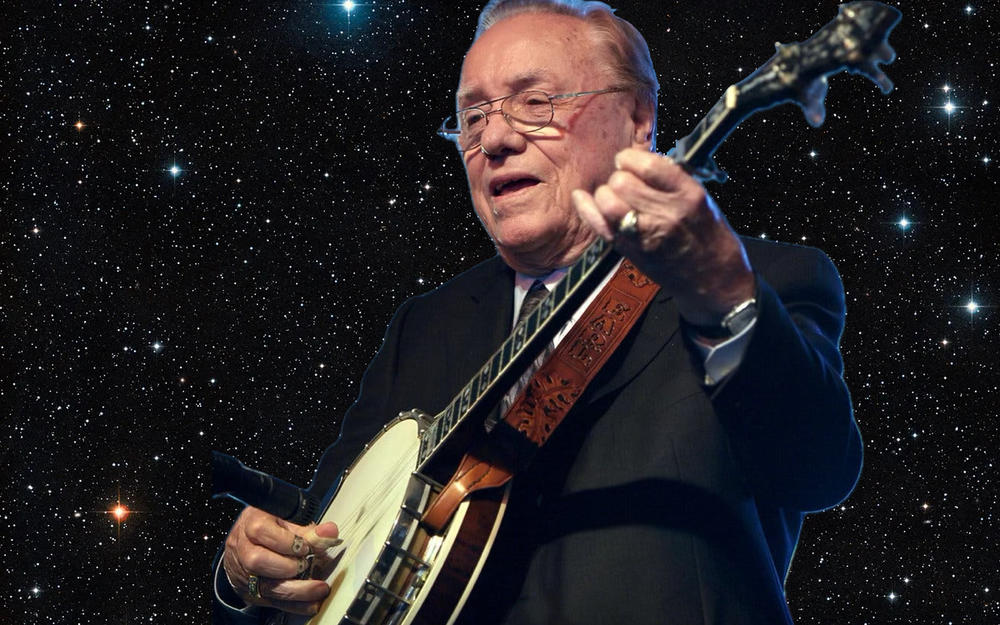
Section Branding
Header Content
Mr. Scruggs and His Three Magical Fingers
Primary Content
This year, people in North Carolina are celebrating the hundredth birthday of one of their most beloved sons, the revolutionary and legendary bluegrass banjo player Earl Scruggs. He defined how most of us believe the banjo is supposed to sound. But the story is a little more complicated than that. Salvation South editor Chuck Reece is here with his tribute to Earl Scruggs.

TRANSCRIPT:
Chuck Reece: One hundred years ago, a man was born who would change the ears of the South.
His name was Earl Eugene Scruggs.
Earl Scruggs grew up outside a little town called Shelby, N.C. Earl’s daddy, George, played the banjo. Earl was only 4 years old when his father died, but his old open-backed banjo was still in the house when Earl got old enough to pick it up. George Scruggs had played the banjo like most folks played it then. He strummed it. And it probably sounded something like this.
MUSIC: Phoebe Sanders - Claw Hammer Banjo
Chuck Reece: But young Earl Scruggs wanted to do more than just strum. Twenty years ago, right before Earl celebrated his 80th birthday, he sat down with Terry Gross of Fresh Air. He described when his signature style came to him. Here’s what he said.
Earl Scruggs (from 2003 Fresh Air Interview): I was picking the banjo, and I was playing a tune that I still play today called "Reuben."
And when I realized what I was doing, I was playing the way that I play now. It was like having a dream and waking up just actually playing the tune.
Chuck Reece: He woke up playing like this:
MUSIC: Earl Scruggs - "Foggy Mountain Breakdown"
Chuck Reece: That is Earl Scruggs in 1949, playing his mind-bogglingly fast composition “Foggy Mountain Breakdown.” Scruggs’s style of banjo playing changed the way that instrument would be played for generations to follow.
We've heard Earl’s rapidly rolling fingers for so long now that when we think of the banjo, that’s what we think of.
But we never think much about where the banjo — the instrument itself — actually came from. It didn’t come from Shelby. It came to these shores in the memory of enslaved Africans, who had played it when they were at home and free. They made their own banjos when they got here — by stretching animal skins over gourds and adding a wooden neck and catgut strings.
MUSIC: Gus Cannon: "Minglewood Blues"
Gus Cannon made his first banjo when he was 12 years old out of a frying pan and a raccoon skin. That was in 1895. Gus Cannon was born in Red Banks, Mississippi, the 10th child of former slaves. When recording technology came along in the 1920s, Cannon made some records with his band, Cannon’s Jug Stompers. Their biggest hit was called "Minglewood Blues."
The Grateful Dead, 80 years later, updated it and called it “New Minglewood Blues.”
MUSIC: Grateful Dead - "New Minglewood Blues"
Chuck Reece: Southern culture has always been a mix of cultures from around the world, some brought here by choice, some brought here by force.
Telling you the whole story of the banjo’s history would take far more time than I have with you today, but it is a very important story — and one that, like many Southern stories, is far more complicated than we’ve been led to believe.
The next time you want your understanding of the South complicated, come see us at SalvationSouth.com. We do that kind of thing every week.
Salvation South editor Chuck Reece comments on Southern culture and values in a weekly segment that airs Fridays at 7:45 a.m. during Morning Edition and 4:44 p.m. during All Things Considered on GPB Radio. You can also find them here at GPB.org/Salvation-South and please download and subscribe on your favorite podcast platform as well.






